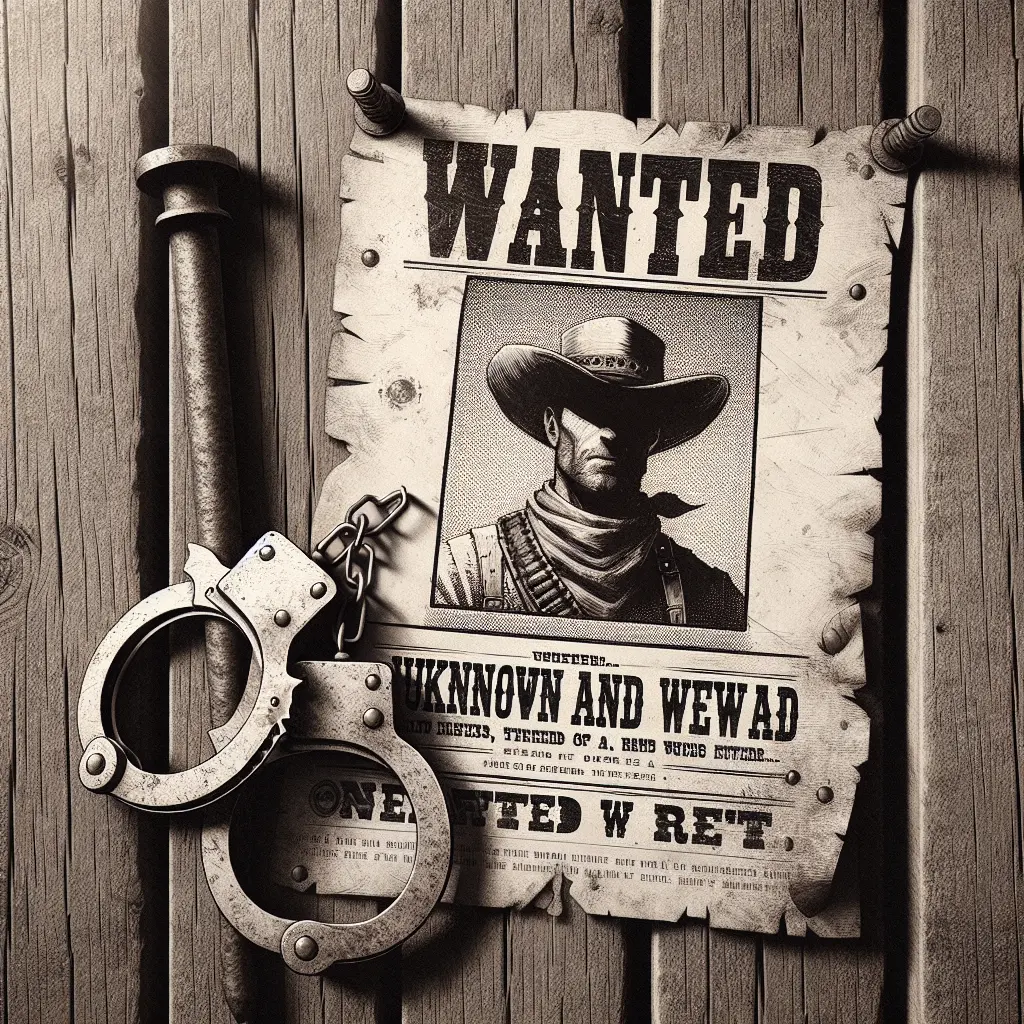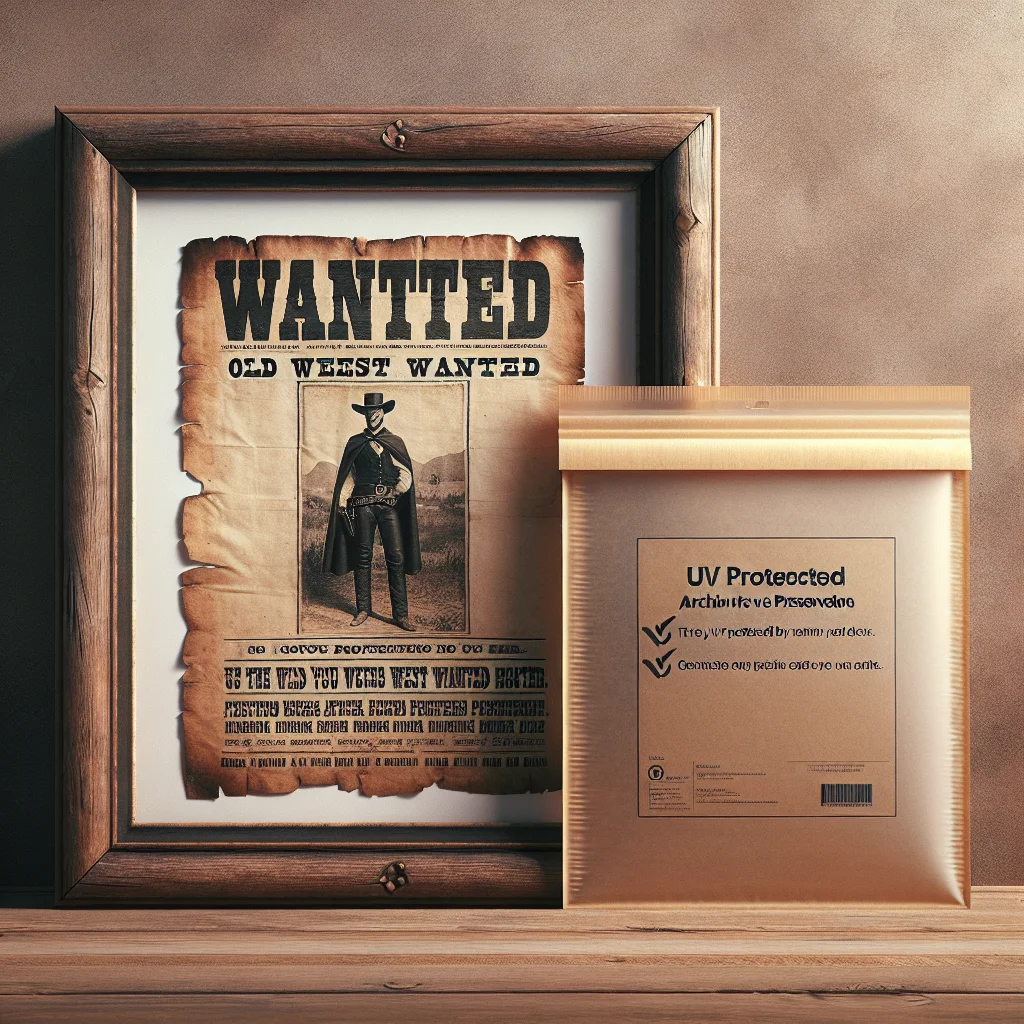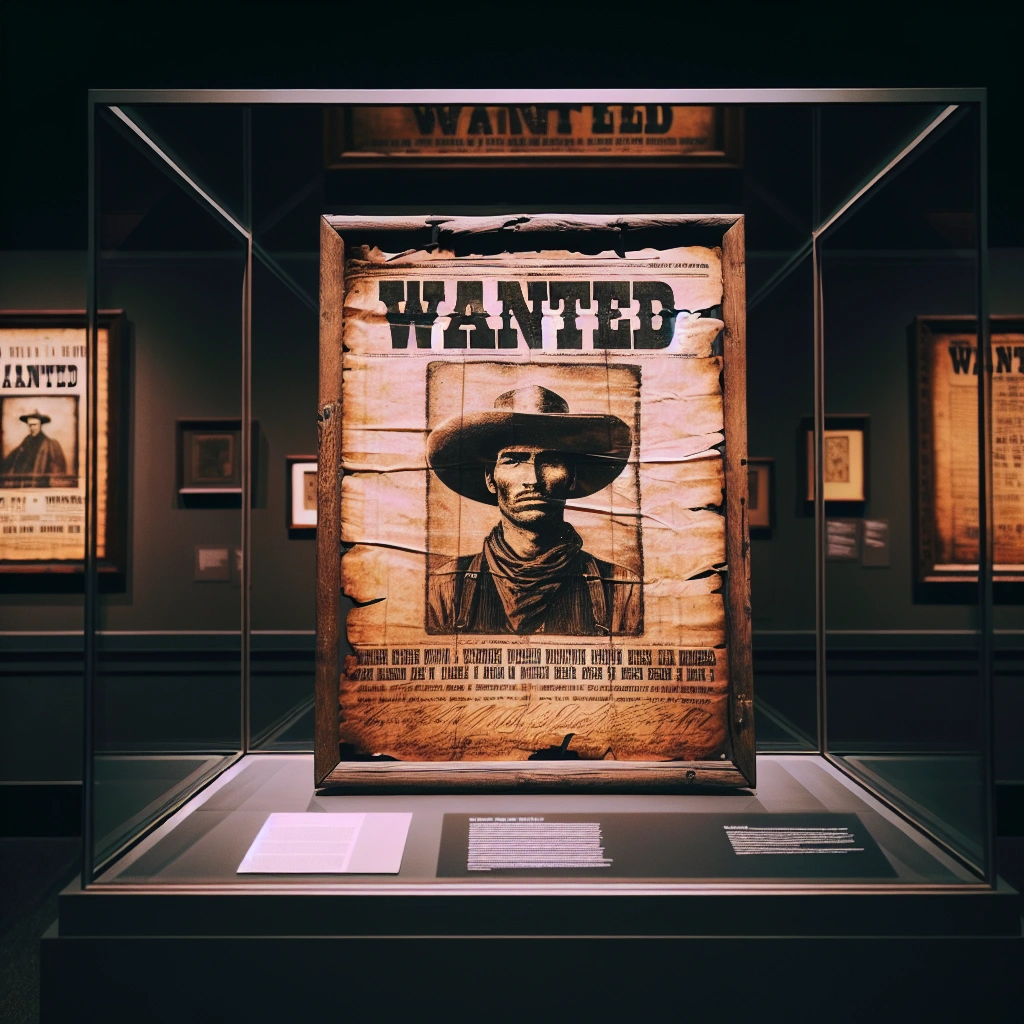Short Answer
Yes, old west wanted posters shaped the public perception of outlaws in the 19th century because they provided detailed descriptions of wanted individuals and created a sense of fear and caution within the public.


Key Takeaways
-
Old West wanted posters played a crucial role in shaping the public perception of outlaws in the 19th century.
-
These posters were the primary means of communication for law enforcement agencies to alert the public about dangerous outlaws and individuals wanted for various crimes.
-
Old West wanted posters have had a profound impact on American pop culture and the way outlaws are portrayed in the media.
-
Preservation efforts for old west wanted posters have gained increasing importance, with organizations and individuals dedicated to safeguarding these artifacts for future generations.
-
The visual impact of these posters and the dramatic language used instilled a sense of urgency and danger, amplifying the public’s apprehension and anxiety regarding notorious figures.
History of Old West Wanted Posters
The use of Old West wanted posters in the 19th century played a vital role in law enforcement and public safety. During this period, these posters were the primary means of communication for law enforcement agencies to alert the public about dangerous outlaws and individuals wanted for various crimes.
The 19th-century Old West was a time of lawlessness, and the use of wanted posters helped authorities track down criminals and maintain public safety. These posters were prominently displayed in public areas such as saloons, post offices, and law enforcement offices, engaging the community in the effort to capture dangerous fugitives.
Notorious outlaws featured on Old West wanted posters were infamous figures with bounties on their heads, such as Jesse James, Billy the Kid, and Butch Cassidy. The posters provided detailed descriptions of the outlaws, including their physical features, crimes committed, and the rewards offered for their capture.
These notorious individuals were a constant source of fascination for the public, with their likenesses widely circulated on wanted posters, contributing to the mythos surrounding the Old West and its legendary outlaws.
The Impact and Legacy of Old West Wanted Posters
The Influence on American Pop Culture and Media Portrayal of Outlaws Old West wanted posters have had a profound impact on American pop culture and the way outlaws are portrayed in the media. These posters, featuring bold fonts and detailed descriptions of wanted criminals, have played a significant role in shaping the public’s perception of the Wild West. They have become iconic symbols of lawlessness and rebellion, often romanticizing the figures depicted as rebellious anti-heroes. This romanticized portrayal continues to influence modern media representations of outlaws, shaping the way these characters are depicted in movies, TV shows, and literature. The legacy of old west wanted posters can be seen in how outlaws are glorified and immortalized as legends in popular culture.
Another example, in the 20th century, wanted posters served as a source of inspiration for Western-themed art, music, and literature, further perpetuating the myth and allure of the Old West outlaws. The cultural impact of these posters extends beyond historical documentation, playing a pivotal role in shaping the American imagination of the Wild West era, fostering a continued fascination with the outlaws of that time.
The enduring legacy of these posters has undeniably influenced the collective perception of American history and contributed to the romanticized image of the Old West outlaw.
Collectible Value and Preservation Efforts for Old West Wanted Posters Old West wanted posters hold significant value as collectible items, attracting the interest of historians, collectors, and enthusiasts. This value is attributed to their historical significance, rarity, and the captivating narratives they encapsulate.
Due to this, preservation efforts for old west wanted posters have gained increasing importance, with organizations and individuals dedicated to safeguarding these artifacts for future generations. As they offer a compelling glimpse into a bygone era, these posters are recognized as valuable historical relics and sought after by collectors, museums, and historical societies.
Moreover, the preservation of old west wanted posters is essential in maintaining a tangible link to the past, allowing individuals to connect with the rich history of the American frontier. Preservation efforts entail meticulous conservation techniques, archival storage, and digitization to ensure that these posters endure for posterity.
By safeguarding these artifacts, the unique stories they tell about the individuals and events of the Old West continue to be accessible, contributing to a deeper understanding and appreciation of this pivotal period in American history.
The impact and legacy of old west wanted posters reverberate through American pop culture, media portrayals of outlaws, and the collectible value assigned to these historical artifacts. Their influence endures, shaping the way society perceives the enigmatic figures of the Wild West while their preservation contributes to the ongoing appreciation and understanding of this captivating chapter in American history.
The old west wanted posters played a crucial role in shaping the perception of lawlessness in the American frontier. These posters, often featuring vivid language and detailed descriptions of criminals, contributed to the romanticized image of the wild west as a lawless and untamed territory.
The dramatic narratives and bold visuals on these posters fueled the public’s imagination, instilling a sense of danger and excitement associated with the American frontier.
The fascination with old west wanted posters continues to endure in contemporary times due to their historical significance and the allure of the wild west era. Today, these posters serve as valuable artifacts that offer unique insights into the law enforcement practices and societal norms of that period.
Their visual appeal and the captivating stories of outlaws depicted on the posters continue to capture the imaginations of people, preserving the mystique and intrigue of the old west.
The unique blend of history, storytelling, and visual artistry depicted on old west wanted posters makes them timeless relics that resonate with people’s fascination for the adventurous spirit of the American frontier. The enduring appeal of these posters underscores their cultural significance and their role in shaping the collective perception of the wild west as a captivating and enigmatic chapter in American history.
The old west wanted posters stand as powerful symbols of a bygone era, evoking a sense of nostalgia and wonder as they continue to captivate the public’s imagination with their tales of daring outlaws and the untamed landscapes of the American frontier.
| Category | Information |
|---|---|
| Influence on American Pop Culture and Media Portrayal | Old West wanted posters have romanticized the image of outlaws, shaping the perception of lawlessness and rebellion in the Wild West. They continue to influence modern media representations of outlaws in movies, TV shows, and literature. |
| Collectible Value and Preservation Efforts | Old West wanted posters hold significant value as collectible items due to their historical significance and rare narratives. Preservation efforts involve meticulous conservation techniques, archival storage, and digitization to ensure their enduring legacy and accessibility for future generations. |
| Impact on American Frontier Perception | Old West wanted posters played a crucial role in shaping the perception of lawlessness in the American frontier, fueling the public’s imagination with tales of daring outlaws and the untamed landscapes. They stand as powerful symbols of a bygone era, evoking a sense of nostalgia and wonder. |

Question: How Did Old West Wanted Posters Shape Public Perception of Outlaws in the 19th Century?
During the 19th century, old west wanted posters played a pivotal role in shaping the public perception of outlaws. These posters were the primary means of identifying and capturing wanted individuals. They contained detailed descriptions of the outlaws, including physical attributes, such as height, build, and distinguishing features like scars or tattoos. Additionally, they indicated the specific crimes the outlaws were wanted for, creating a sense of fear and caution within the public.
The prominence of these posters in public areas such as saloons, post offices, and sheriff’s offices ensured widespread visibility. The dramatic language used, such as “Dead or Alive,” instilled a sense of urgency and danger, amplifying the public’s apprehension and anxiety regarding these notorious figures. These visuals created a heightened sense of alertness within communities, fostering a collective vigilance against potential threats posed by the outlaws.
The visual impact of these posters cannot be overstated. In an era before widespread photography, these wanted posters became the primary visual reference for the appearance of outlaws. People relied on these illustrations to recognize and report sightings of the wanted individuals. This reliance on the posters embedded the images and descriptions of the outlaws firmly in the public’s consciousness.
Furthermore, the cash rewards mentioned on the posters incentivized individuals to actively seek out and report any sightings or knowledge about the outlaws. This not only turned public opinion against the outlaws but also fostered a community-driven approach to law enforcement, sparking a sense of participation and responsibility among citizens.
The fear and fascination sparked by wanted posters contributed significantly to the popular legends and folklore about notorious outlaws of the Old West, perpetuating their notoriety even beyond their lifetimes.
Old west wanted posters wielded immense influence in shaping public perception of outlaws in the 19th century. Their widespread distribution, vivid descriptions, and the promise of rewards embellished the outlaws’ notoriety, instilling fear while galvanizing communities to take an active role in crime prevention and law enforcement.

Recommended Amazon Products for Collectible Value and Preservation Efforts for Old West Wanted Posters
Here’s a curated list of products that can help you in preserving Old West Wanted Posters for their collectible value. These recommendations are based on the preservation efforts for historical artifacts.
High-Quality Archival Storage Supplies
-
Pros:
- Properly stores and protects paper artifacts from aging and deterioration
- Acid-free and lignin-free to prevent yellowing and fading
- Various sizes available to accommodate different poster dimensions
-
Cons:
- May be expensive for larger collections
You can check out the High-Quality Archival Storage Supplies on Amazon to preserve Old West Wanted Posters.


Museum-Quality Conservation Materials
-
Pros:
- Offers professional-grade preservation materials for delicate paper items
- Meets conservation standards for long-term storage and display
- Provides peace of mind in preserving posters’ integrity
-
Cons:
- Comprehensive museum-quality materials may require a higher investment
Explore the Museum-Quality Conservation Materials on Amazon for preserving Old West Wanted Posters.


Digitization and Scanning Equipment
-
Pros:
- Allows for high-resolution scanning to create digital archives
- Protects posters’ content and allows for easy access and sharing
- Provides a backup in cases of physical damage or loss
-
Cons:
- Initial investment in equipment and software may be required
Discover the Digitization and Scanning Equipment on Amazon for preserving Old West Wanted Posters.


Historical Document Preservation Books
-
Pros:
- Offers guidance on techniques and materials for historical preservation
- Provides insights into best practices for protecting valuable artifacts
- Educational resource for understanding preservation methods
-
Cons:
- Requires time and effort to implement techniques effectively
Browse through Historical Document Preservation Books on Amazon for preserving Old West Wanted Posters.


Acid-Free Archival Sleeves
-
Pros:
- Protects posters from dust, fingerprints, and handling damage
- Transparent sleeves allow for visibility and safe display
- Ideal for individual poster storage and protection
-
Cons:
- Not suitable for long-term display or framing
Find the Acid-Free Archival Sleeves recommended for preserving Old West Wanted Posters.



Top Recommended Product for Collectible Value and Preservation Efforts for Old West Wanted Posters
If you’re looking for the best solution for preserving Old West Wanted Posters, we highly recommend Museum-Quality Conservation Materials. Here’s why:
The Museum-Quality Conservation Materials offer professional-grade preservation materials designed to meet conservation standards for long-term storage and display. They provide the peace of mind in preserving the posters’ integrity, making it the top choice for protecting the collectible value of Old West Wanted Posters.
Ready to preserve the collectible value of Old West Wanted Posters? Check out Museum-Quality Conservation Materials on Amazon today for the best results!